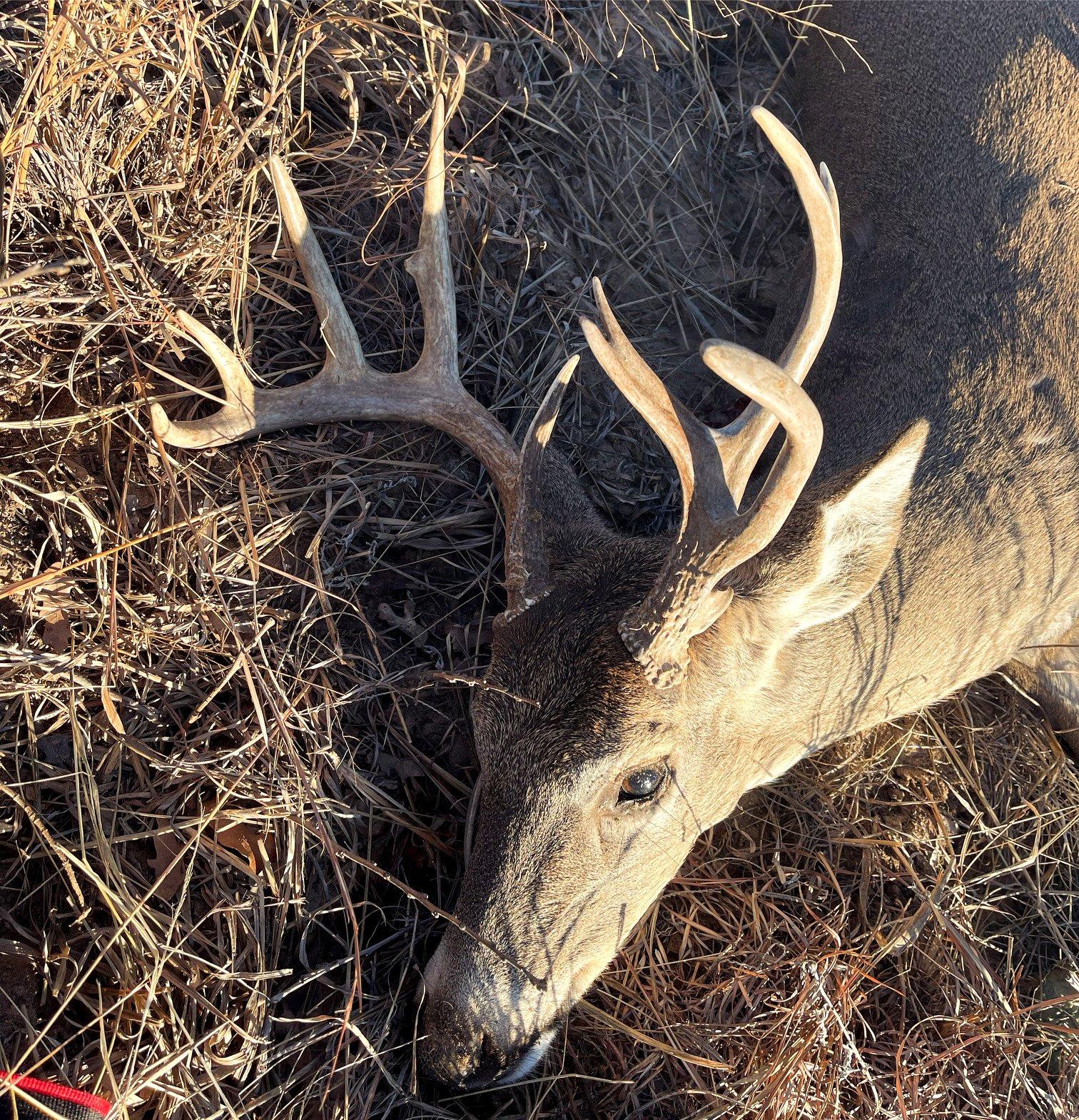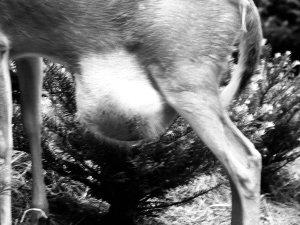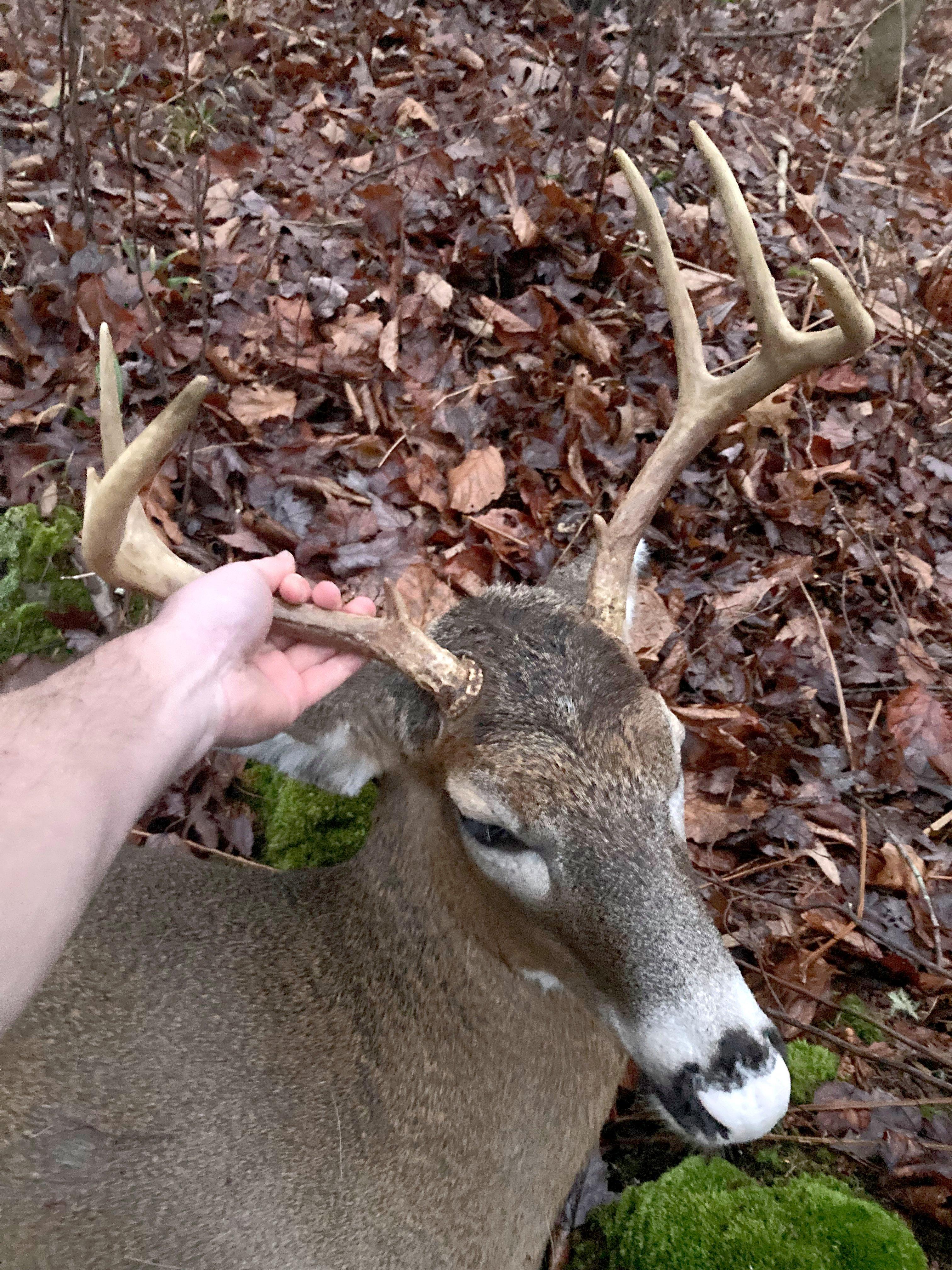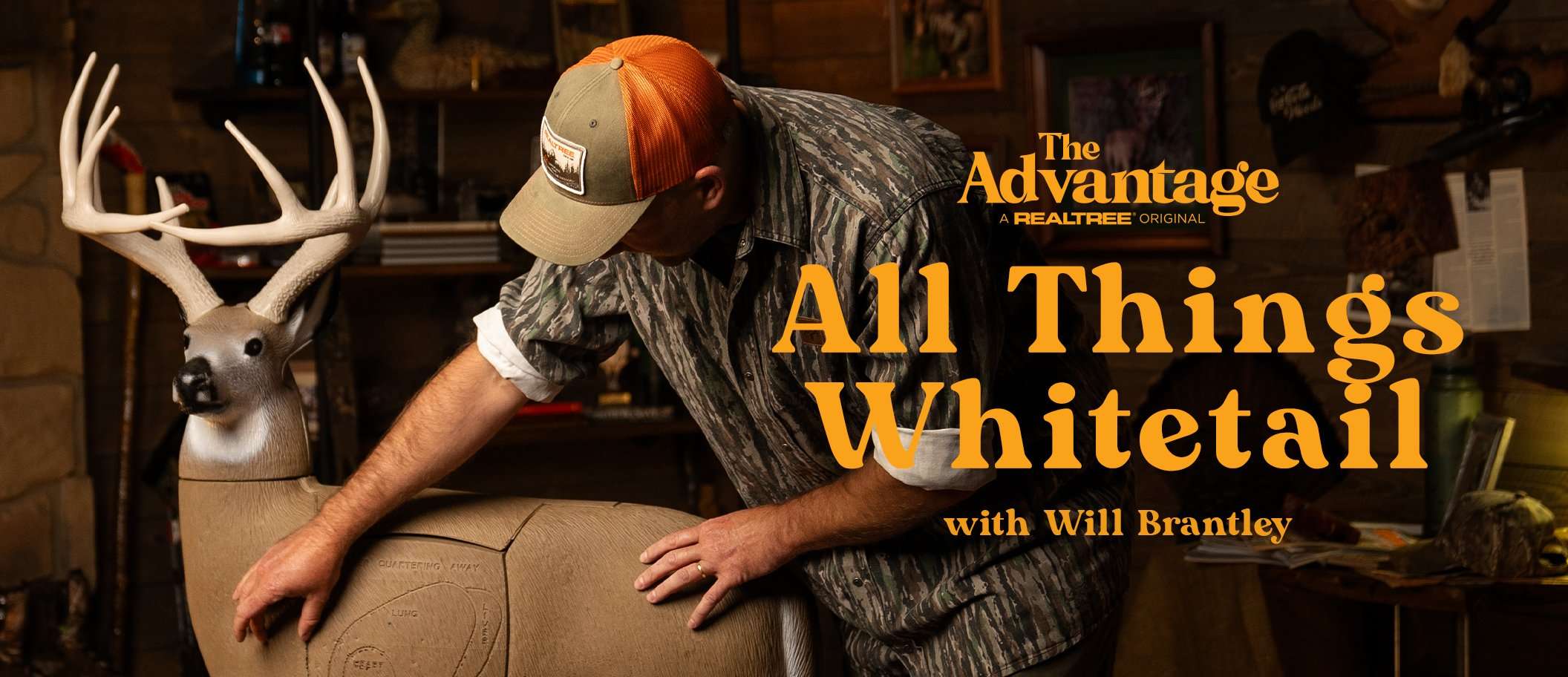These funky bucks amazed hunters and even befuddled biologists. How did these strange abnormalities occur?
Most of the bucks shot across America this past season were typical 6- to 10-pointers with sleek bodies and common facial features. But some weird deer were killed, too, like these.

This buck’s left side was likely affected by an injury to the deer’s right side the previous year. Image by Mike Hanback
Texas Funk
I spotted the buck coming across the pasture and did a double take. I knew he was a shooter — a 130-class deer is a good one on that raw ground in the Texas Panhandle — but something about the rack didn’t look right. The right side was a nice five, but the left was a gnarly mess of tines, with maybe a third beam sprouting out and up. I pressed the trigger and killed only the third nontypical buck in my 40 years of hunting across the country.
The peculiar left side of the rack was likely caused by an injury to the right side of the buck’s body during the 2023 spring/summer antler growing season. In what deer scientists call the contralateral effect, an injury to one side of a deer’s body, often the off-side hind leg, causes an antler deformity on the opposite side of the rack. The exact reasons for this are unknown and a mystery.
I examined the entire right side of the buck’s body but didn’t notice a healed injury or anything out of the ordinary. I was extremely happy with the funky buck. What a cool skull mount it will make.

Joe Jennings got a picture of a deer on his trail camera with an abnormal blob on its gut. Biologists suspect it was a hernia. Image courtesy of Joe Jennings
The Blob Buck
An 8-pointer with a big blob hanging off its gut showed up on Joe Jennings’ trail camera this past November. Joe ran the disturbing picture by a couple of local biologists, who determined the buck likely had a hernia.
A hernia occurs when internal organs and tissues pop through an opening in the muscular wall surrounding the abdomen but are still covered by skin. Potential causes of a hernia in deer are trauma, like being hit by a car. Bucks have been known to get hernias as they push and fight in the rut.
Although the blob buck was mobile and did not to appear to be in pain, the biologists told Joe the prognosis was not good. The protruding organs were unlikely to revert to their normal position in the abdomen, and the mass would eventually affect the buck’s ability to move and survive.
Joe shot and tagged the deer and felt good about it. The backstraps and ham meat were unaffected and tasted great.

A Massachusetts hunter shot this buck last season, and it had an all-white nose, something the author has never seen — and neither had several top deer biologists. Image courtesy of Karl O.
The White-Nosed Buck
Karl O. sent me an email: “Mike, I shot this deer in Massachusetts. I’ve never seen a deer with a white-tipped nose like this. No other noticeable anomalies. The nose seemed completely normal (not swollen) except for the color of the tip. What do you think?”
In my four decades of studying and observing whitetails, I have never seen or heard of a deer with a completely white-tipped nose. I ran Karl’s pictures by two of America’s top deer biologists; men who have observed tens of thousands of whitetails and seen every genetic freak imaginable. Until now.
“That’s crazy, never seen anything like it,” said Kip Adams with the National Deer Association. “It looks like the nose was frostbit, but I’m guessing that’s not the case. I don’t know what caused it.”
Texas biologist Mickey Hellickson has conducted countless surveys and studies of whitetails for decades. Mick, who has seen and handled as many deer as anyone, said, “I have never in my lifetime seen a deer like the white-tipped-nose buck. I’m guessing maybe it is a piebald, and the randomly located white blotch ended up on his nose pad instead of somewhere on his skin. But that’s speculation.”
Karl O. is happy with his buck, and he should be. He shot one of the rarest and most unique whitetails ever.
Don’t Miss: LESSONS LEARNED FROM 7 LOST BUCKS












